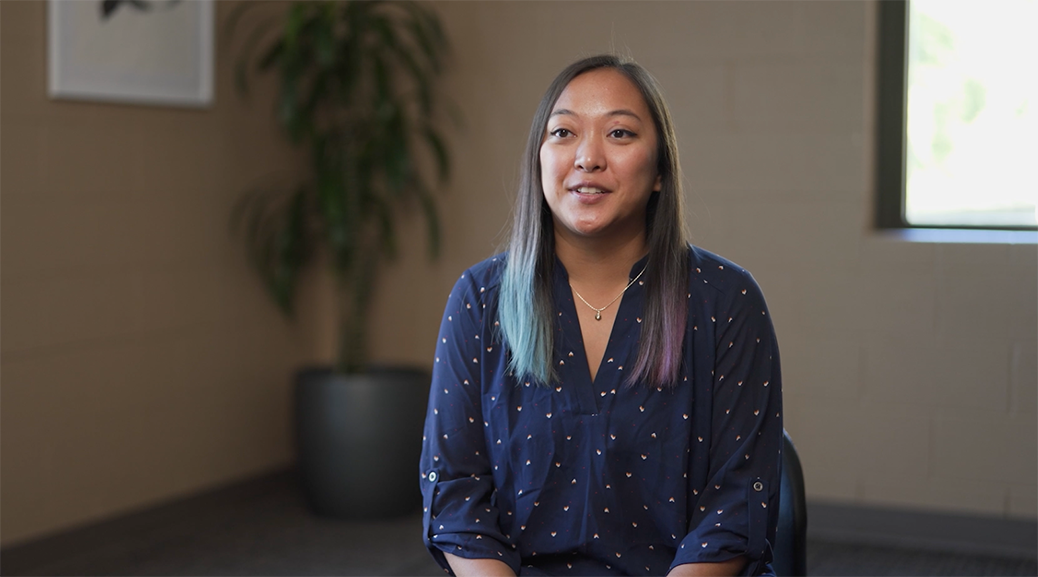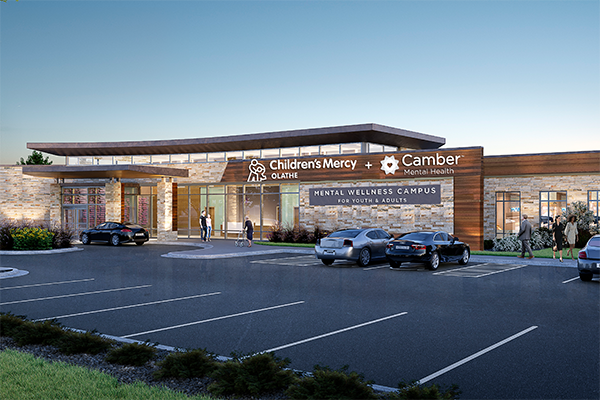Hope’s Story: Teen with Depression Who Attempted Suicide Gets Life-Saving Help at Camber

Camber Children’s Mental Health (previously KVC Hospitals) is a nonprofit organization that provides children’s mental health treatment. The Camber team serves children and teens ages 6 to 18 who are struggling with depression, anxiety, schizophrenia, bipolar disorder, aggression, self-harm, thoughts of suicide, and other mental and behavioral health challenges. Read this moving story about how Janny Sivilay (pictured above), a therapist at Camber Kansas City (previously KVC Hospitals Kansas City), helped a teen with depression who attempted suicide connect with her mother and support system, and find hope.
If you or someone you know is considering suicide, call the 988 Suicide and Crisis Lifeline at 988 or chat here. If you’re in Kansas or Missouri, you can also call Camber at 913-890-7468 to find children’s mental health treatment near you.
Hope (name changed to protect her privacy) is a 15-year-old girl who experienced severe depression. Before coming to Camber, she attempted to end her life in multiple ways. This led to her being in and out of hospitalization more than once a month for nine months at other hospitals.
When she came to Camber, Hope received a full medical, clinical, and nursing assessment. She also received intensive mental health care and medication management; individual, family and group therapy sessions; case coordination; 24/7 support from our skilled nursing staff; and innovative treatment and education to teach her about neuroscience, her brain, and how to regulate her emotions.
Watch Janny, the therapist, tell Hope’s story here:
Focusing on the Power of Connection
As her therapist, my goal was to connect with Hope and to help her connect with her family and wider support system. Hope didn’t communicate her suicidal thoughts to her mother because, based on how she had dismissed her suicidal thoughts in the past, she didn’t feel she was a safe person. Similarly, her mother had a difficult time connecting with her daughter and felt that Hope’s suicide attempts were an attempt to get attention. But Hope was not seeking attention; she truly felt alone. Many of us adults miss that in kids because we don’t realize kids can feel as bad as they do.
A typical acute stay at Camber is 5-7 days, but Hope was able to stay for 3 weeks as she worked on getting better. Although Hope’s mental health became stabilized in the hospital, she was reluctant to go back home, stating that her mother didn’t believe that she wanted to die. Hope even attempted to harm herself while in the hospital to prove it that she wanted to really die. I worked to build trust with her, so she knew I believed her and I didn’t need her to tell me with her actions that she wants to die. I taught Hope how to communicate with her mother in a way that she would understand and helped her build coping skills.
Since the lack of connection was a huge factor in Hope getting better, I spent many hours in therapy each week trying to help Hope and her mother understand that they both really cared about each other. Once I saw them start to see this bridge of caring that existed between them, I got goosebumps. It was almost magical to see them realize that they did have the connection they both wanted and needed.
Preparing to Safely Return Home After Treatment
As we prepared for discharge, I acknowledged that it would be a bit scary for them to trust themselves and each other. But inpatient treatment is only for a short period, and they had gained the skills to navigate the future.
We always do a safety plan when a client leaves. Hope’s safety plan included her regular outpatient care as well as an intensive outpatient treatment program.
Hope successfully transitioned back home and she was able to be without the hospital for a year. When I did see her back again a year later, it was simply because she was having a hard time with her new medication.
Her mother told me that she was very grateful for the Camber team because it was the first time in a long time that they had ever felt like hospitalization was helpful. Hope showed so much progress, and felt safe communicating and using her outpatient resources rather than going straight to harming herself and asking to return to the hospital.
Hope told me that her relationship with her family has been significantly better, that her mother had been advocating for her, and that she felt like she had a support system again for the first time in a long time.
I encouraged Hope, making sure she knew that this hiccup was just a small bump in the road, and she was not back at square one in her journey to mental health wellness. Hope successfully discharged home again after appropriate medication changes.
As I reflect on the people and organizations that support Camber’s mission, I feel immense gratitude. Without our supporters, we wouldn’t be able to do the work we do here. We’ve saved so many lives and we continue to save lives.
This work is meaningful to me on a personal level. When I was growing up, I had friends and family that had mental health needs they were not addressing. As I help children here at Camber, it’s almost like I’m going back in time, meeting those kids and I’m helping them.
Learn more about Camber’s children’s mental health treatment services here or support our mission here.





